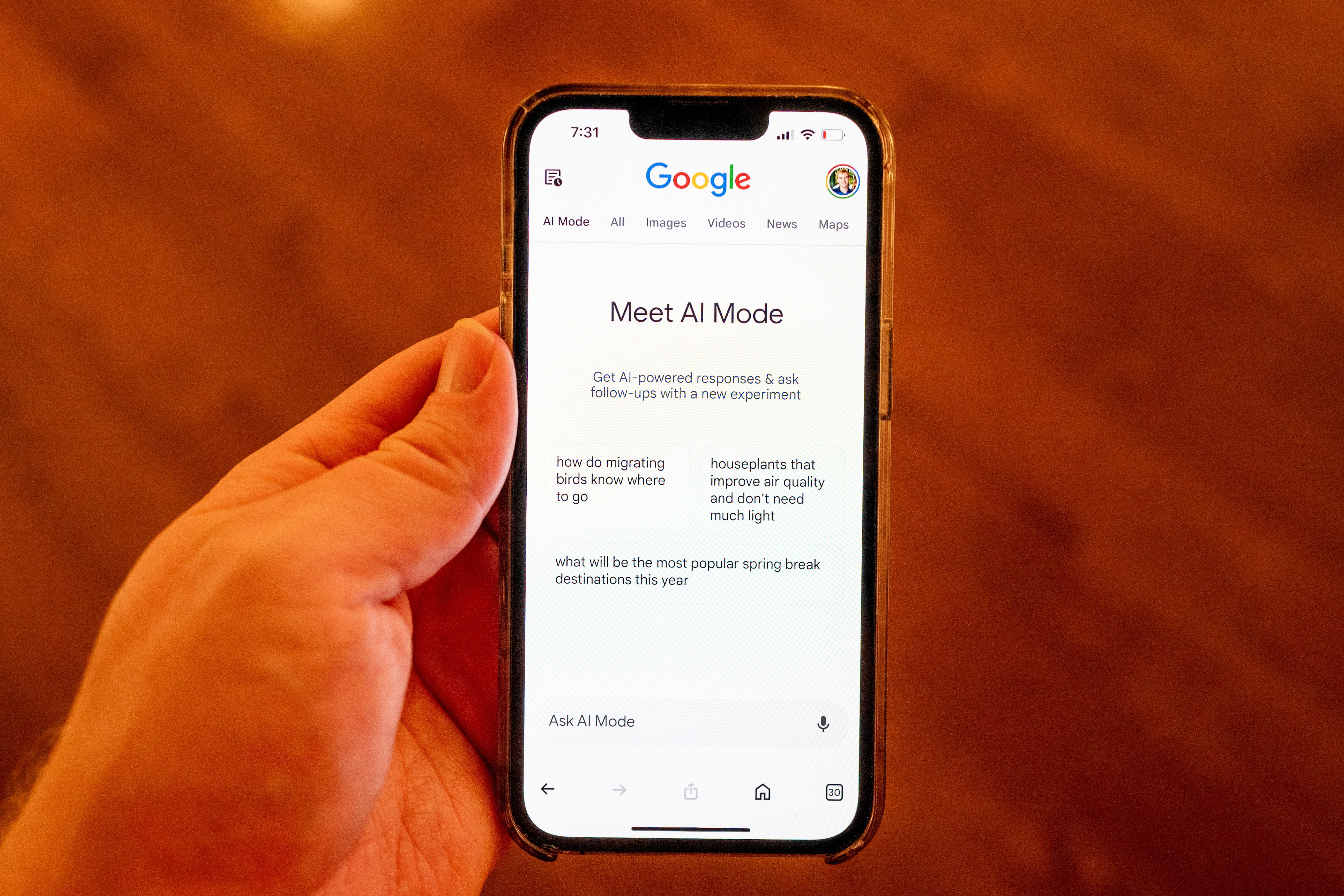
Smith Collection/Gado/Getty Images
Google’s multibillion-dollar investments in artificial intelligence need to pay off eventually. Ads may be the answer.
Google on Wednesday said it’s expanding ads within the search and shopping AI Overviews that appear at the top of results, going from mobile to desktop in the US. AI Overview ads are beginning to roll out in other locations, too.
It’s also testing ads within its AI Mode, a relatively new product built into its search page, where users can conduct deeper research using its Gemini AI chatbot, Google said.
Dan Taylor, VP of global ads at Google, told Business Insider that queries within AI Mode tend to be twice as long as traditional searches and more exploratory in nature. This “opens up these new opportunities to discover brands where advertisers might not necessarily have been in the conversation before,” Taylor said.
The ad news follows the opening of Google’s big summer developer conference, in which the search giant offered a look at updates it’s been cooking up for its AI models. CEO Sundar Pichai described a “total reimagining” of Search as AI Mode is brought to all users in the US this week.
With Google committing to invest more than $75 billion in AI infrastructure and to expand its cloud capacity this year, Wall Street is watching closely for hints about how the company intends to profit from the new technology.
Advertising is set to be an important portion of that pie; the majority of Google’s revenue is derived from traditional search ads. While Google is embracing its new AI future, it will also be looking to protect its cash cow. Last year, Google recorded about $265 billion in ad revenue.
Google introduced ads to AI Overviews on mobile last year. This week, Google said that the launch of AI Overviews has grown the number of “commercial queries,” where users are searching for information about a particular product or service they may later go on to buy. It didn’t state by how much.
For now, advertisers can’t directly opt for their ad placements to appear within AI Overviews or AI Mode. Instead, Google will pull from existing search campaigns, where marketers target users on variables like their location, demographics, and by keywords and topics.
Google’s introduction of AI-generated answers to its search results got off to a fairly bizarre start last year. It infamously recommended users add glue to their pizza and suggested they eat rocks. Taylor said Google had strict brand suitability guidelines and extensive controls in place across search, display, and YouTube to prevent ads from appearing in unfortunate places that marketers would rather avoid.
Advertisers and website owners are grappling with the impact of AI-generated search. Overviews often offer a definitive answer rather than a series of links that encourage users to visit their websites. According to an April analysis of 150,000 popular keywords from the search marketing company Ahrefs, the average click-through rates on top-ranking search results have dropped since Google’s AI overviews were introduced.
Google will need to strike a careful balance between monetizing its AI offerings and providing a clean user experience, especially since some generative-AI rivals, like OpenAI’s ChatGPT, have yet to roll out ads. (OpenAI has hinted that ads aren’t out of the question, though.)
“If people are changing the way they search and using AI search more for commercial queries, there’s no doubt we’ll see a shift in ads moving to that space,” said Matt Steiner, director of biddable media at the marketing agency Croud.
Google is exploring ways to automate the entire advertising process through AI
Google also offered a glimpse on Wednesday at how it’s using AI to automate creating and buying ads across search, its display ad network, and YouTube.
It’s letting advertisers use its AI text-to-video and text-to-image generators, Veo and Imagen, to create the visual elements of their ad campaigns based on their product catalogs. On search, a new feature called Smart Bidding Exploration will automatically detect new types of queries advertisers can bid on based on more complex user searches that go beyond typical keywords like “best credit card.” And Google is offering an AI agent within Google Ads and Google Analytics, which can make recommendations on campaigns or suggest new trends in their data that might be of interest.
“More traditional marketing tactics are not really able to keep up with the change in consumer behavior, and so AI is coming to the rescue, if you will, to help marketers adapt,” Google’s Taylor told BI.
Big Tech giants are increasingly looking for ways to automate advertising, with the potential to disrupt the entire industry of advertising agencies and vendors. In a recent interview, Meta CEO Mark Zuckerberg said his company is working toward a future where advertisers simply state their objective, connect their bank accounts, and Meta would do the rest — from creating the ads, selecting the targeting, and then providing the results. Google is moving in a similar direction with its AI-powered Performance Max product.
Scott Sadeghian-Tehrani, media strategy director at the marketing agency 26PMX, said some clients are wary of these types of automated tools. That’s particularly true of retailers who often dice their budgets between different product categories and want to be able to make adjustments in the event of holding excess stock, or if it’s unseasonably sunny and they want to ramp up advertising their swimwear, for example.
“Clients aren’t really ready to hand over those reins, so there’s a bit of trepidation,” said Sadeghian-Tehrani.
The post Get ready for more ads in Google’s AI search answers appeared first on Business Insider.




